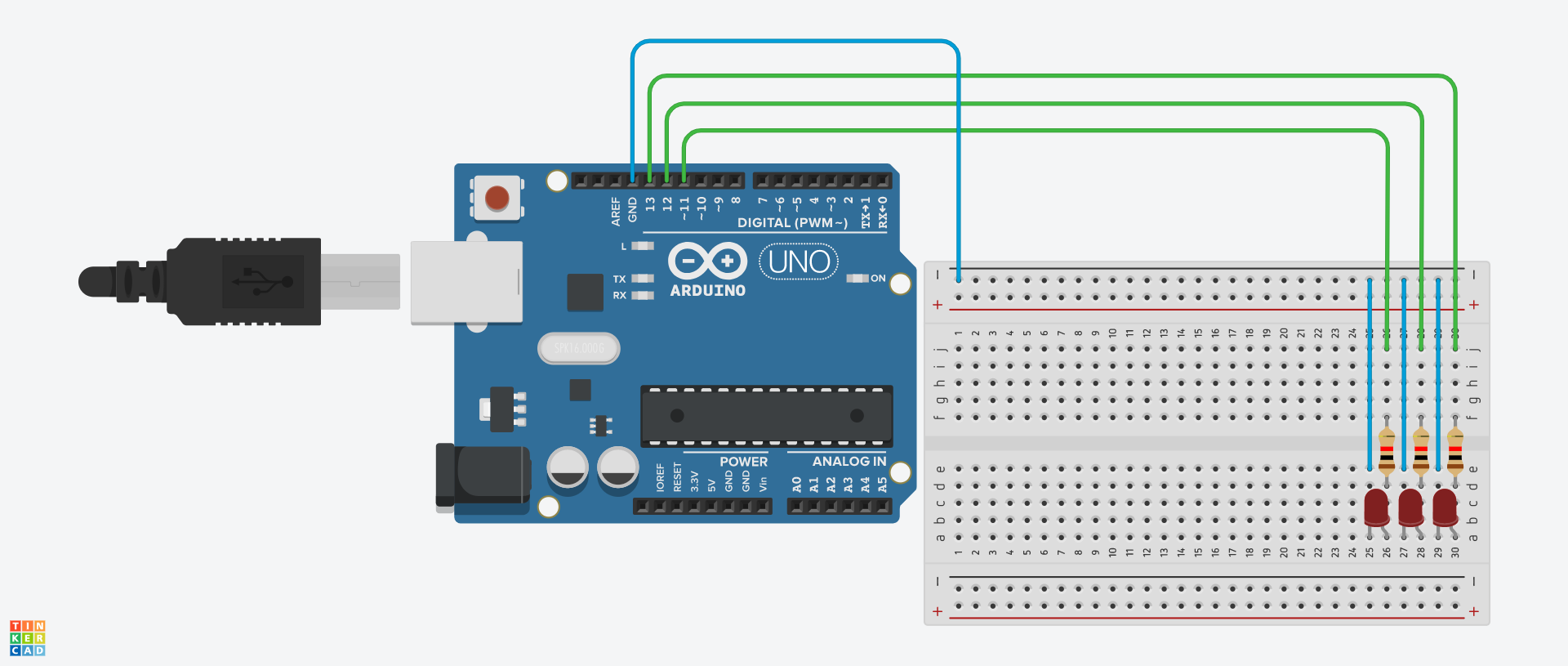updated 21 April 2022
This is a blinking LED activity as the intro for Arduino Code programming.
Arduino is both software and hardware. Right there, you can control your design (hardware) through the code (software). So, it's one of the reasons also that Arduino is used extensively in prototyping.
There are two built-in functions in Arduino Code:
void setup and void loop.
void setup is where you tell the computer whether
an electronic component being programmed is an
output device. Other initial setup can be
done here, like the initial mode of an LED
is turned on.
void loop is where the execution of commands
happens. Take note, void loop is a repeat
forever loop.
Take note of the word void. A void type
of function will simply execute all the commands
and will not return any value. Other functions
which are not void do return values.
You need 3 basic LEDs, 3 resistors, 1 breadboard and the Arduino UNO board.
Follow the setup as shown in the picture below:
Then, go to Code section and copy the initial
code below:
void setup()
{
pinMode(13, OUTPUT);
pinMode(12, OUTPUT);
pinMode(11, OUTPUT);
}
void loop()
{
digitalWrite(13, HIGH);
digitalWrite(12, LOW);
digitalWrite(11, LOW);
delay(1000);
digitalWrite(13, LOW);
digitalWrite(12, HIGH);
digitalWrite(11, LOW);
delay(1000);
digitalWrite(13, LOW);
digitalWrite(12, LOW);
digitalWrite(11, HIGH);
delay(1000);
}
There are just 3 commands being used here:
pinMode is the command you tell the Arduino
board what is the mode of a particular pin.
If not, then the default is input.
digitalWrite is the command whether
there will be supply of voltage HIGH
or there is none LOW for a particular
pin, like in our example,
Arduino Digital Pin 13. For a basic LED,
we all know that when there is sufficient
voltage, it is turned on and if there
is too low or none at all, it is
turned off.
delay is the command for temporarily delaying
a program, just like a pause. If prior to
this, an LED is turned on, it will pause for
a certain amount of time with the initial
status of the LED. It's in terms of milliseconds,
because for computers, they work in terms of
milliseconds or even nanoseconds.
For example, they can accomplish, say,
a thousand tasks in just 1 second.
For high-powered servers, it's more than that.
For advanced programmers, this is very critical:
it can be used for multitasking, say,
that 1 second delay can be used
to do other tasks within the main program.
Now, talking about the initial code above, it will simply have blinking LEDs from right to left and the interval is 1 second. And since it is a repeat forever loop, it will simply continue doing the same thing until you stop it.
You can modify the code to blink at the same time or another pattern with rhythm by changing the delay at different parts. As you can see, you have the full control through your code, as long as you know how to modify it without breaking it.
Finally, here is the actual project link:
https://www.tinkercad.com/things/achHRTDWDhW
You may want additional information about the Arduino UNO board, the breadboard and another project, so check this out:
